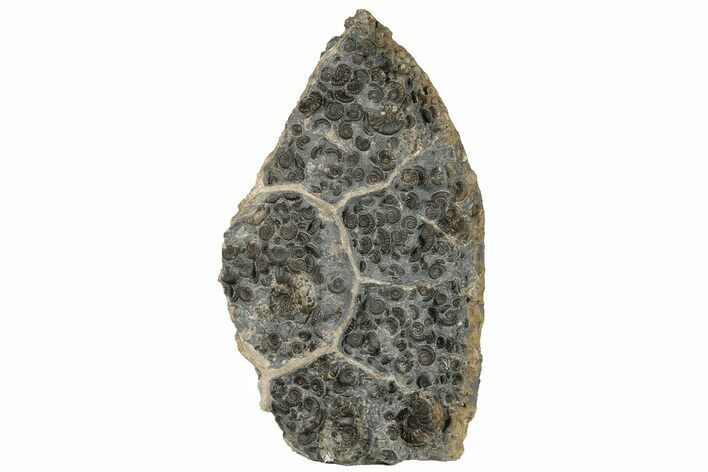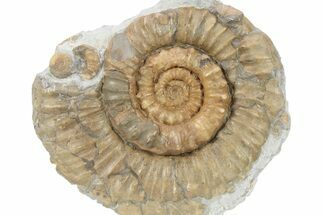This Specimen has been sold.
13" Impressive Promicroceras Ammonite Cluster - Somerset, England
This is a spectacular 13" tall cluster of several hundred Lower Jurassic ammonites of the species Promicroceras marstonense. This ammonite-filled stone is quarried near Marston Magna, England, and is commonly referred to as "Marston Magna Marble". The piece has been meticulously prepared using mechanical tools to expose many of the individual ammonite fossils, a process that would have taken countless hours.
The block of stone measures 13 x 8 x 5" and weighs approximately 23 lbs. The base has been cut flat so that is stands up on a flat surface without the need for a stand. There are visible calcite seams running throughout the rock and calcite crystal-lined cavities visible on the sides. A really impressive display piece.
The block of stone measures 13 x 8 x 5" and weighs approximately 23 lbs. The base has been cut flat so that is stands up on a flat surface without the need for a stand. There are visible calcite seams running throughout the rock and calcite crystal-lined cavities visible on the sides. A really impressive display piece.
About Ammonites
Ammonites were ancient marine cephalopods, similar to today's squids and octopuses, but with a defining feature: their distinctive, tightly coiled spiral shells. These shells, resembling those of modern nautiluses, served as both a protective home and a buoyancy aid, allowing ammonites to navigate the prehistoric seas with ease. First emerging around 240 million years ago in the Triassic Period, ammonites thrived for over 175 million years, adapting through numerous forms and sizes. As predatory creatures, they likely fed on smaller marine organisms, using their tentacles to capture prey. However, their long reign came to an end 65 million years ago at the close of the Cretaceous, coinciding with the mass extinction event that also eliminated the dinosaurs.
Ammonites were ancient marine cephalopods, similar to today's squids and octopuses, but with a defining feature: their distinctive, tightly coiled spiral shells. These shells, resembling those of modern nautiluses, served as both a protective home and a buoyancy aid, allowing ammonites to navigate the prehistoric seas with ease. First emerging around 240 million years ago in the Triassic Period, ammonites thrived for over 175 million years, adapting through numerous forms and sizes. As predatory creatures, they likely fed on smaller marine organisms, using their tentacles to capture prey. However, their long reign came to an end 65 million years ago at the close of the Cretaceous, coinciding with the mass extinction event that also eliminated the dinosaurs.
SPECIES
Promicroceras marstonense
LOCATION
Marston Magna, Somerset, England
FORMATION
Lower Lias, Obtusum Zone
SIZE
13 x 8 x 5", 23 lbs
CATEGORY
SUB CATEGORY
ITEM
#176297
We guarantee the authenticity of all of our specimens.
 Reviews
Reviews

















